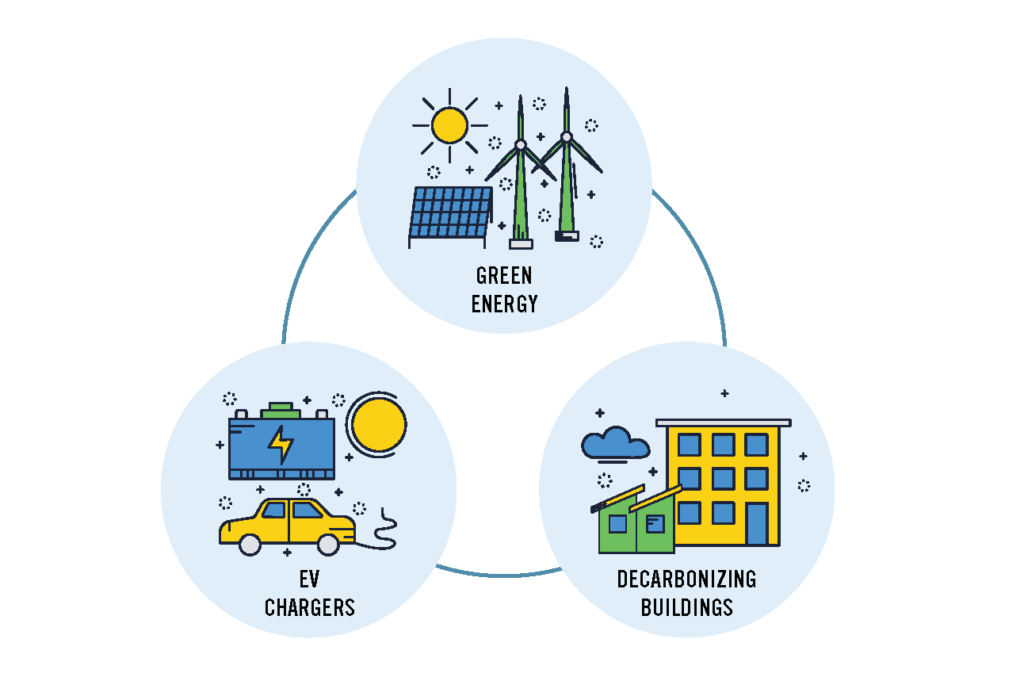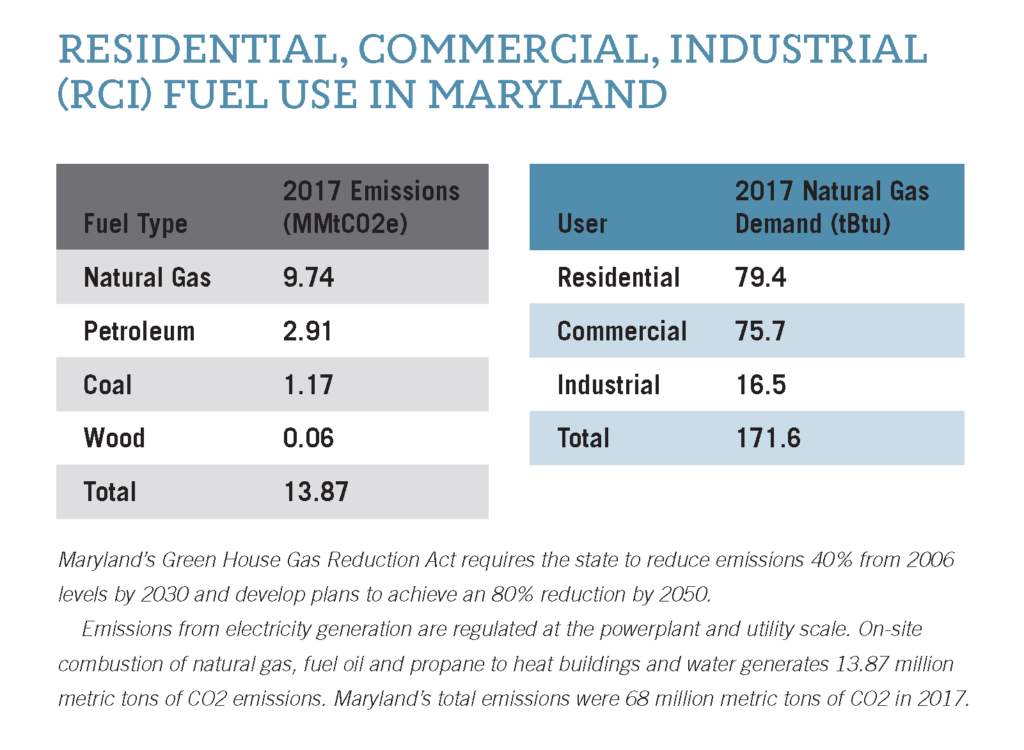This article appeared in the September/October 2020 issue of NAIOP-MD InSites Newsletter.
The August 31 release of draft recommendations from a state legislative work group brought sharp focus to an imminent challenge facing the commercial real estate sector.

The report by the Buildings Subgroup of the Mitigation Work Group of the Maryland Commission on Climate Change concluded that “the building sector must substantially reduce its direct use of fossil fuels” in order to meet goals laid out in the Maryland Greenhouse Gas Reduction Act. The subgroup presented six recommendations for “immediate actions to begin reducing emissions from buildings in Maryland.”
Those measures would be implemented while the commission develops long-range plans to transition Maryland away from using fossil fuels for heat and hot water.
The immediate-action recommendations included:
- Requiring all new buildings to use only electrical power by 2025;
- Commit Maryland to being a “national leader in adopting the newest construction codes, including appendices for net zero energy/carbon pathways, to ensure that all new buildings meet stringent energy efficiency standards and have low energy costs;”
- Incentivize net-zero energy, all-electric buildings;
- Adopt code amendments as soon as possible that would require new buildings to be equipped to support electric vehicle charging, solar power, smart grid technology and demand response functions; and
- Develop an energy transition plan by the end of 2021 to decarbonize the buildings sector.
“The state is moving beyond its traditional practice of adopting the latest national energy codes and incentivizing energy efficiency measures,” said Tom Ballentine, Vice President for Policy and Government Relations at NAIOP Maryland. “Consideration is now being given to stretch codes in new construction and strategies that electrify heat and hot water systems in new construction and existing buildings. Some of those may be cost-effective, but the challenge is that for many of the 1.1 million Maryland households and businesses served by natural gas, switching to electric equipment will increase capital and operating costs.”
Other jurisdictions around the country have started implementing similar initiatives.
Marta Schantz, Senior Vice President of the ULI Greenprint Center for Building Performance, points to Washington, D.C. as one of the best examples of how to craft and implement a decarbonizing plan that both satisfies environmental goals and addresses practical, economic realities of the commercial real estate sector and other stakeholders.
“The District made very purposeful efforts to engage the building community and listen to them,” Schantz said. “When it comes down to it, if a city has climate goals and buildings comprise 40 to 70 percent of carbon
emissions, you have to get the building community engaged and participating and collaborating with you.”
That collaboration must produce viable paths for implementation, Schantz said. The Clean Energy DC Ominbus Bill is one of the most ambitious pieces of clean energy legislation passed in the U.S. to date. Its goals include making all new construction net-zero energy by 2026, sourcing 100 percent clean electricity by 2032, reduced GHG emissions by 50 percent (compared to 2008 levels) by 2032, and implementing Building Energy Performance Standards on all buildings larger than 50,000 square feet in 2021.
The implementation plan, which is based on years of energy benchmarking and analysis of D.C. buildings, includes Green Bank loans, PACE loans and other incentives, and provides building owners with five year windows to meet energy standards or alternate compliance measures.
In Washington state, particularly Seattle, state and city officials have followed a somewhat similar path to pursue ambitious decarbonizing goals. Seattle is working towards making its entire building and transportation sectors carbon neutral by 2050. Meanwhile, Washington state is using three-year building code cycles to incrementally lower its energy consumption levels 70 percent (compared to 2006 levels) by 2030.
“So every three years on both the residential and the commercial side, the state is targeting a 14 percent energy use reduction,” said Michael Hedrick, Senior Engineer with McKinstry and incoming chair of the Sustainability Committee of NAIOP Washington State. “They say they want to use the most cost-effective strategies available…But we are already past the point where if you are looking for a 7 percent return on investment or a simple seven-year payback [on energy efficiency measures], anything you do beyond code is not going to meet those financial metrics.”
Consequently, Seattle is offering incentives to developers. For example, the city will approve much larger developments in select areas if those projects meet the Seattle Green Building Standard which includes attaining LEED Gold and exceeded efficiency standards in state energy code by 15 percent.
“That can be substantial. It can quadruple the amount of floor area you can build on particular sites,” Hedrick said. “We are seeing developers say it’s a really good deal.”
To successfully contend with ambitious decarbonization initiatives, however, the CRE community needs “to get involved with the rule-making process,” he said. “Grab a seat at the table and have a say both in the rule making and implementation.”
